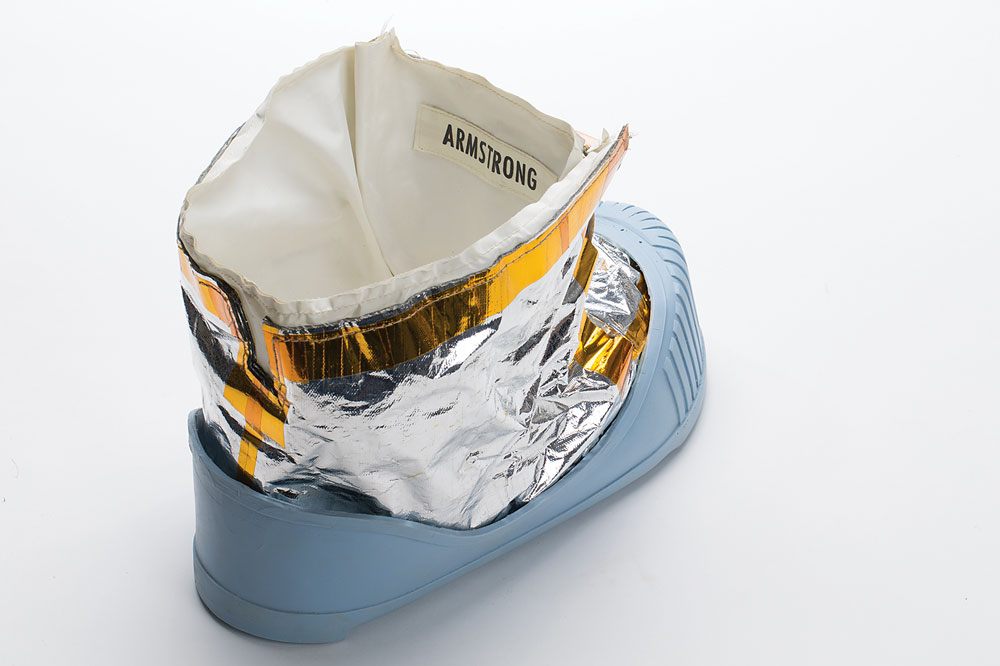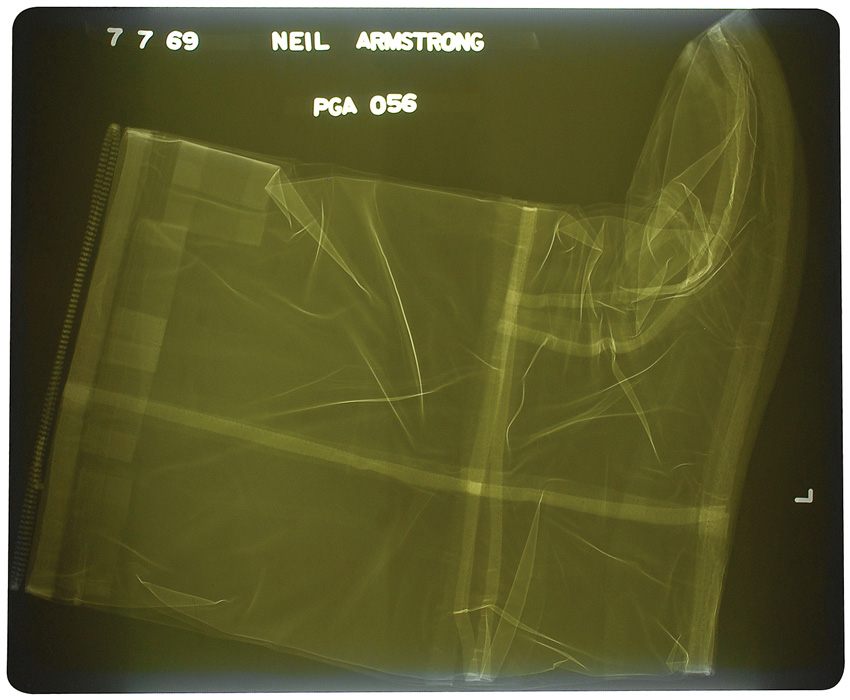For Sale: A Boot That Almost Went to the Moon
If it hadn’t been somehow considered unacceptable.

History’s most famous footstep may well be Neil Armstrong’s, from the Eagle module to the surface of the Moon. “One small step,” to be sure, but it was the result of big engineering from countless dedicated people—including the ones who designed the historic shoe on his foot, one more precise in its specifications than Cinderella’s slipper.
This need for the boots, and indeed all parts of the spacesuits, to be perfect means that there were rejects, models deemed unfit, even for the smallest reasons. RR Auction in Boston has one such prototype up for sale. (At press time, the bid is about $8,000.)
The boot, fitted specifically for Armstrong, measures 8 inches tall, 12.75 inches long, and 5.5 inches wide. It was produced by the International Latex Corporation (ILC) in Dover, Delaware, in either late 1968 or early 1969, not long before the Apollo 11 mission took flight, in July 1969. It’s insulated with radiation-deflecting aluminized mylar, padded with baby blue silicon, and studded with golden Kapton tape, which is particularly good for space travel, since it can handle temperatures ranging from -452 degrees to +500 degrees Fahrenheit. Most striking, however, is the name stitched in Beta cloth along the top of the boot’s interior—“Armstrong,” unadorned and declarative, like a football player’s name on a jersey.

The name is the strongest indication that the boot was designed for the Apollo 11 mission. We don’t know why it never made it to space, and we can only speculate as to whether Armstrong wore it in training, says William Ayrey, ILC’s company historian. Ultimately, he says, there could be any number of reasons why it wasn’t used. A sewing error within 1/32 of an inch, for example, would have been considered too risky. RR previously auctioned an X-ray of one of Armstrong’s boots, taken barely a week before launch, that was conducted to catch even the tiniest imperfection or foreign object that might have slipped into Armstrong’s boot and created havoc.
The prototype is missing two key ingredients: the outer Beta cloth layer and Chromel-R fabrics that adorn the boots Armstrong actually wore. The Beta cloth is fire-resistant, and addressed pressing concerns following the Apollo 1 fire that killed its three-member crew. The Chromel-R, meanwhile, was used with the Moon in mind. No one had ever walked there before, so the Chromel-R, “woven chromium steel” in fabric form, a Kevlar-like material, was added to protect against sharp rocks, Ayrey says. At roughly $3,000 per yard, it makes sense that the prototype would go without it.
As for the real boots, don’t expect them to hit the block any time soon. They’re still up there, says Ayrey, where Armstrong had to abandon them to offset the weight from the moon rocks he and his crewmates brought back to Earth.


















Follow us on Twitter to get the latest on the world's hidden wonders.
Like us on Facebook to get the latest on the world's hidden wonders.
Follow us on Twitter Like us on Facebook